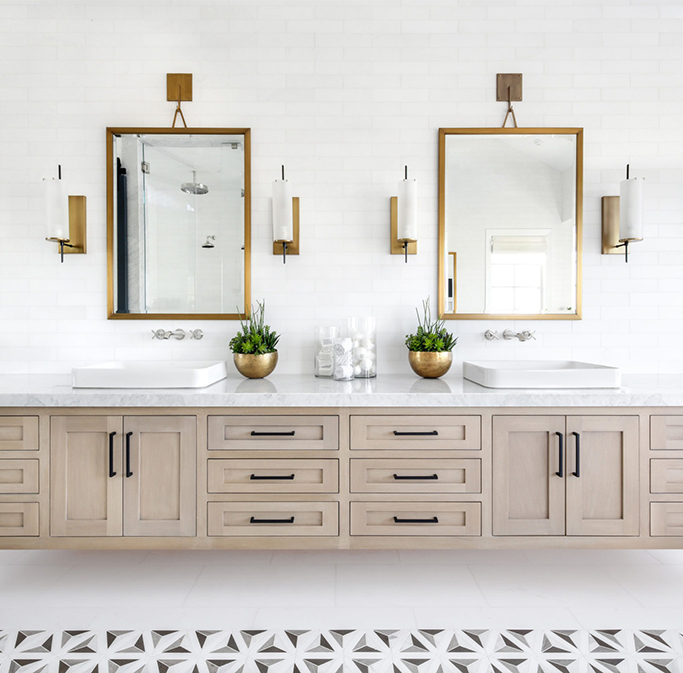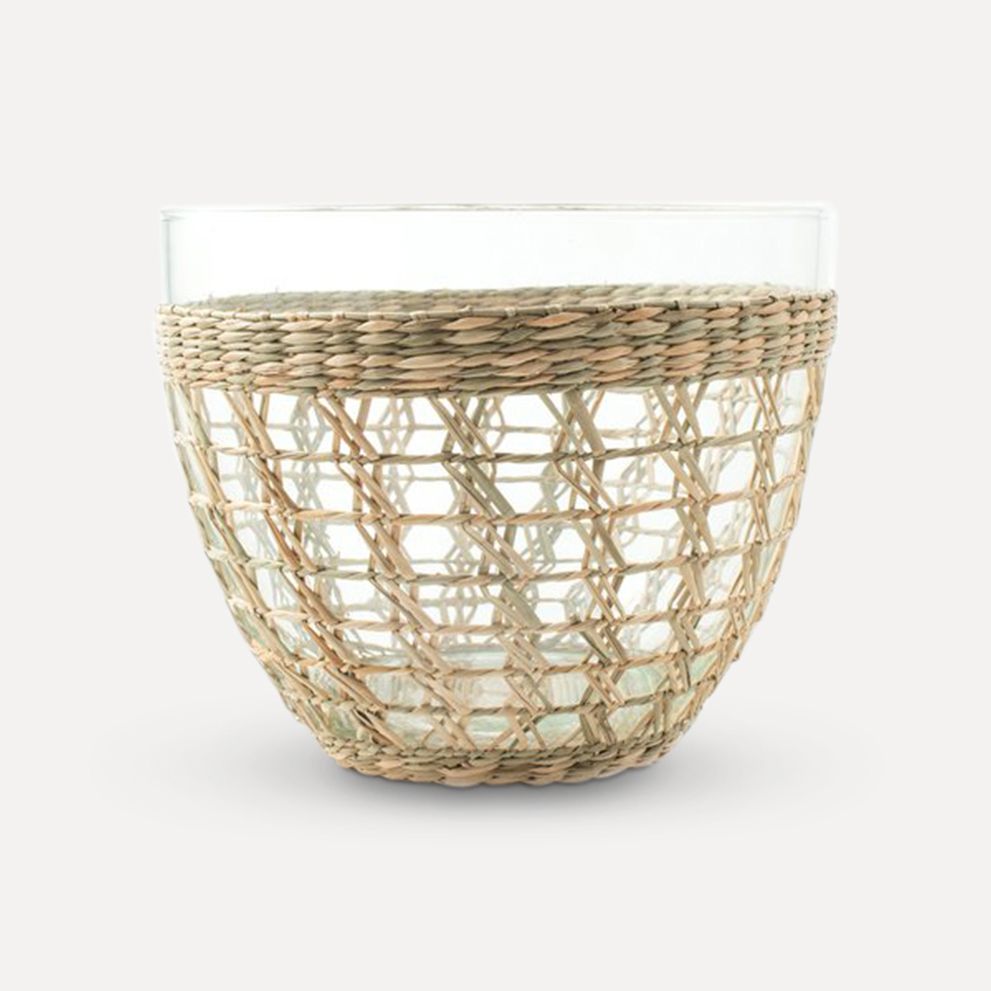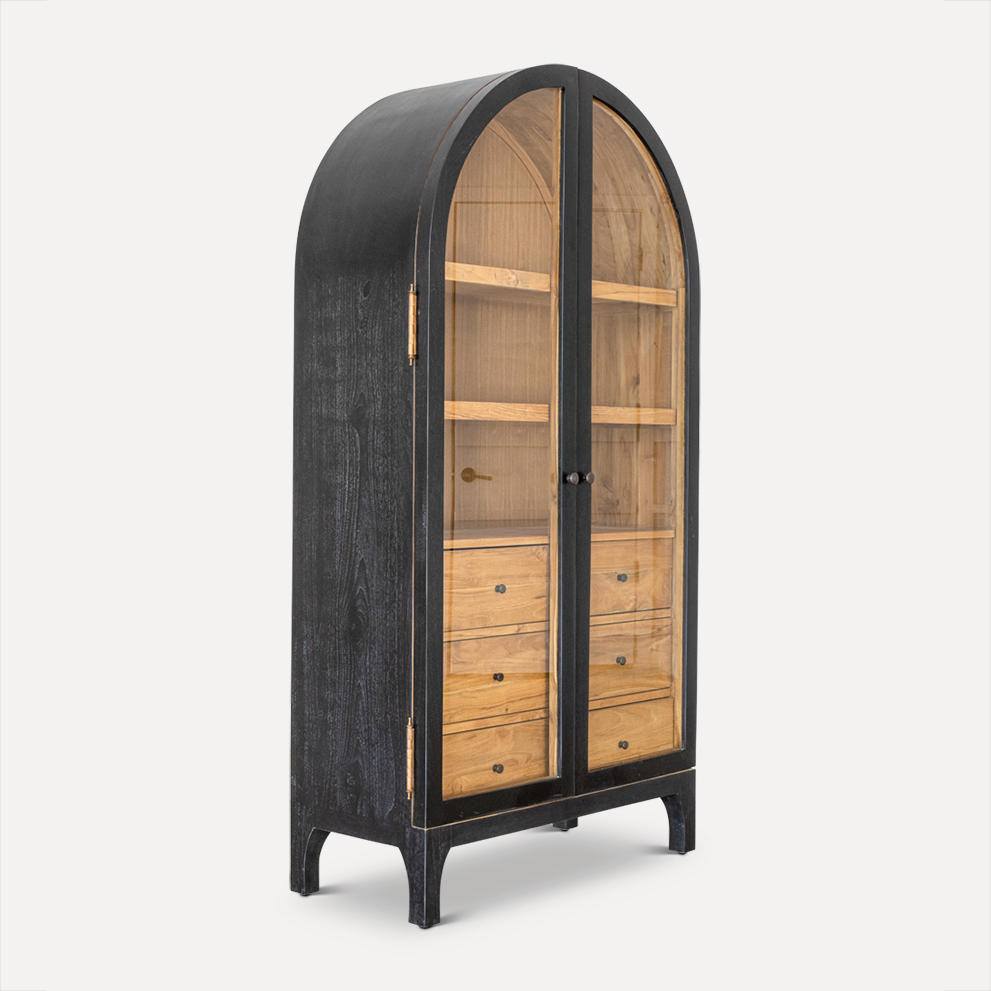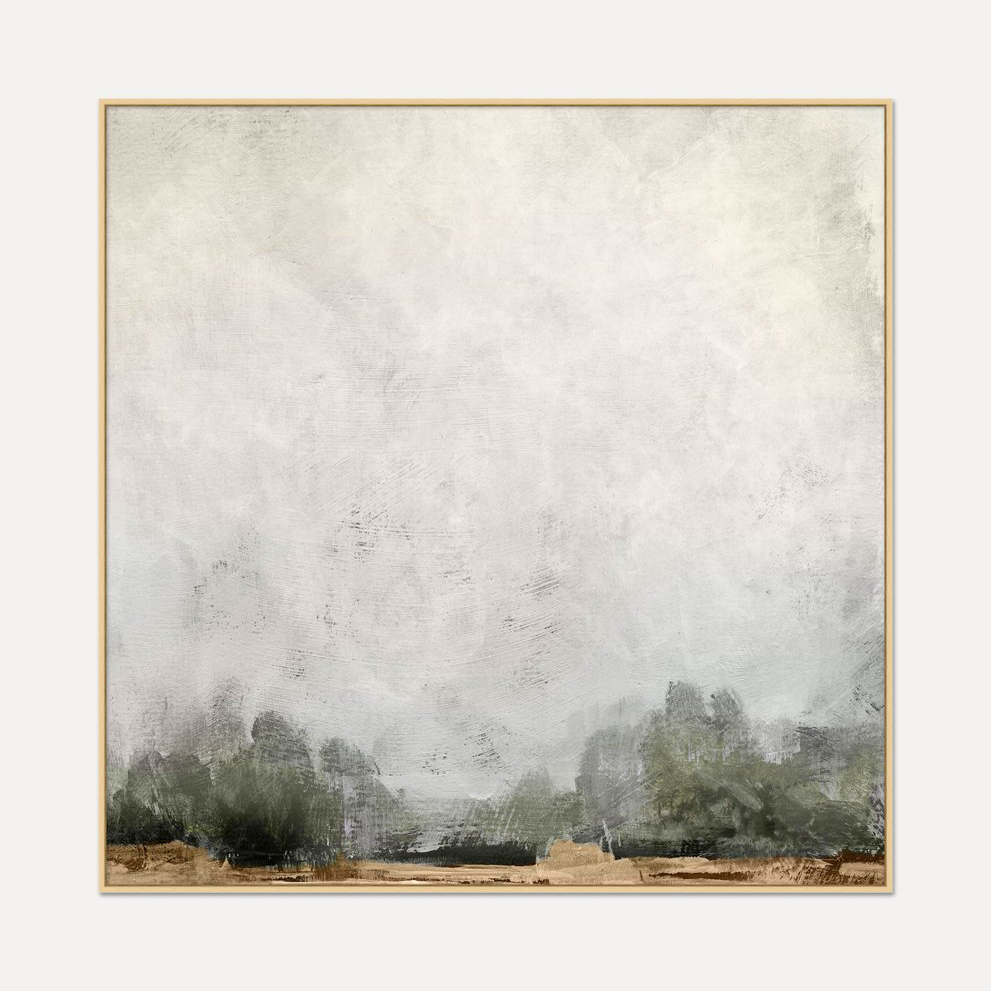Hey everyone! I’m excited to report that, after taking a small hiatus from our blog (what can I say besides… summer!), we’re in the swing of things over here! I’m looking forward to getting back into action sharing project tours, new videos (a TON coming soon!) and posts about trends that are inspiring me lately, right here on my blog. To stay in the know, be sure to sign up for our newsletter if you haven’t already so you don’t miss a single post. Today I felt inspired to cover a topic I’ve been seeing a lot of questions about over on my Instagram feed: How to mix metals in your home. I recently received this question:
How do you mix metals in your home while still achieving a classic look?
This is a great question, especially with sooo many choices for hardware, fixtures, and décor nowadays. When I first started working in the interior design industry, some of my very first projects (including my own home) included mixing metals, so it’s a concept that’s really second nature to me. I think that many people feel like having matchy-matchy metals in their home makes it appear more classic or timeless.
A lot of people assume that one metal throughout a space is the only way to go but I’d love to make the case that mixing metals can still create a timeless but unique look. Mixing metals, when done the right way, can come across more interesting, elegant, and designed, in comparison to using the same metal tones throughout a home. I can see how tackling the mixed metal effect can be overwhelming, so today I’m sharing my five tips for how to effortlessly mix metals in your home…
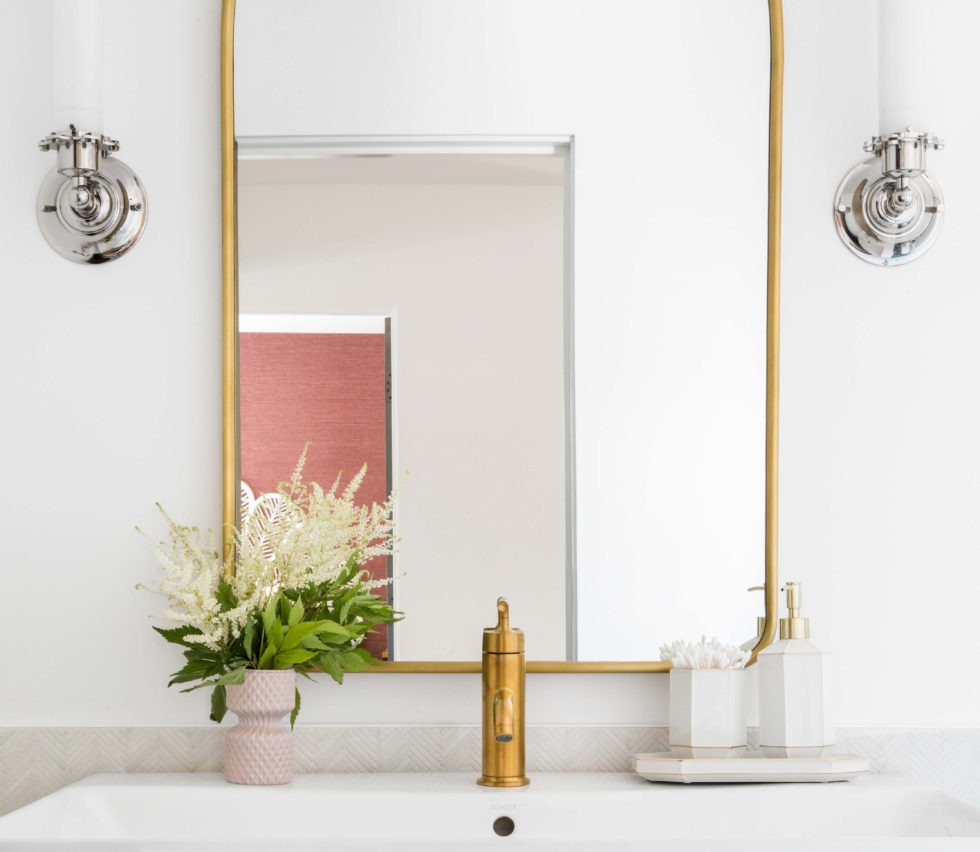
But first, before we get started, let’s discuss the different types of metals that are even out there in the first place. See below for a little refresher on types of metal that are most commonly found in home design:
WARM METALS INCLUDE…
Brass
Copper
Gold
COOL METALS INCLUDE…
Aluminum
Stainless Steel
Nickel
Silver metals
Chrome
Polished Nickel
ACCENT METALS INCLUDE…
Cast iron
Matte black
Other black metals
Here’s a breakdown of our four favorite metals to use…
BRASS
Brass is a gold-toned metal that is commonly used in accent pieces and fixtures in kitchens, living rooms and bathrooms. You can find us using brass on mirrors, light fixtures, faucets, and more.
POLISHED NICKEL
Polished bickel is a great mix with brass because while it’s a cool toned metal, it has a warm undertone that blends well with the warmth of brass. We tend to use polished nickel the most in faucets and lighting.
MATTE BLACK
Matte Black is a dark colored metal that accents really well with other finishes. We most commonly use this in subtle pops in hardware, lighting or bathroom faucets.
STAINLESS STEEL
Stainless steel is another silver-toned metal and is used pretty commonly in kitchens and bathrooms. Many kitchen appliances like sinks are stainless steel, and it blends well with other metal tones.
AND LASTLY, METAL FINISHES!
When talking about metals, we’ll often use a two-word phrase like “brushed bronze” to describe it. The “brushed” part of the “bronze” is known as the finish. Here are the most common finishes…
BRUSHED
Brushed looks like it’s been smoothed over with a paint brush––not totally shiny but a little brushed over. It is a classic finish that goes nicely with eclectic and polished styles.
POLISHED
Polished is that super shiny finish that looks like it’s been polished like a mirror. This finish is commonly seen on silver metals and often appears in bathroom hardware and fixtures.
SATIN
Satin looks like a mix between brushed and polished, so that in-between finish. A satin finish goes well with silver-toned metals, and it’s a very classic, traditional style that doesn’t make too much of a splash.
ANTIQUED
Antiqued is a look that intended to look weathered and a little more Old World. An antique metal finish goes best with richer, darker styles of décor.
HAMMERED
Hammered is a finish that makes the metal look like it’s been pounded all over with a little tiny hammer. This look is commonly seen with copper metal, and it goes well with rustic, country-inspired décor.
Now that we’ve covered the basics, here are my tips for how to mix metals in your home to create a subtle and unique touch. Don’t forget to shop the pieces below each tip if any of them catch your eye!
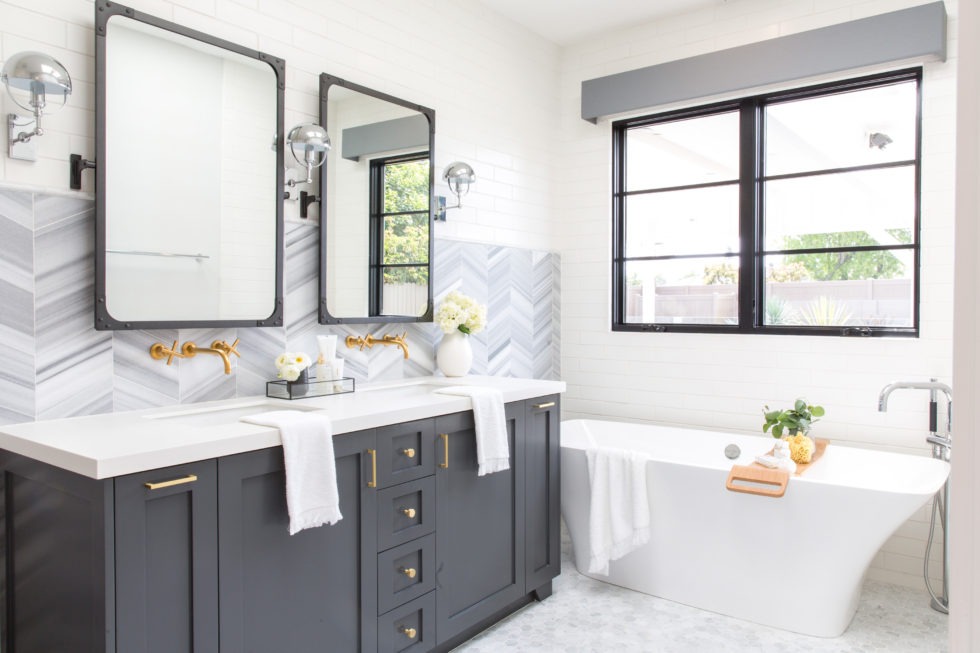
1. Choose one dominant metal, then work around it.
My #1 starter tip is to choose your dominant metal that you want to focus on, and then work around it from there. I recommend focusing on your “installed” hardware items like your faucets first and hold off on choosing the metals for your mirrors and drawer handles and pulls until everything starts to come together a bit more. This is because your hardware (drawer handles and pulls) and mirrors are easy to change down the line without committing to calling the plumber or electrician, so don’t make them the pieces that you’re building around. Your faucet and other fixtures are a bit harder to change up, so start with those first and choose ones in a metal that you love.
For example, in the bathroom pictured above from our Circle Project…
We started with the brass sink faucets as we knew they would be a subtle statement piece in this bathroom. From there, we drew inspiration from the wrought iron window frames and pulled that metal in with the two matte black mirrors. Our last step for this bathroom was deciding on the bathtub faucet, light fixtures and drawer pulls. But it all began with those beautiful bronze sink faucets!
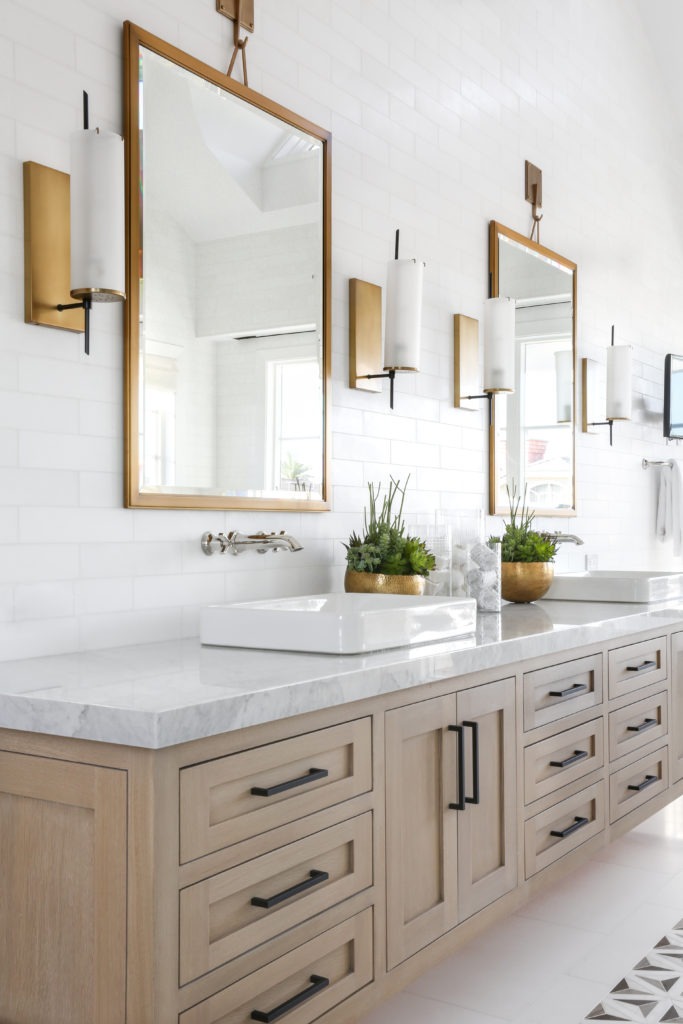
2. Only mix 3 metals at most.
Three is the magic number! Think of it this way: Two of your metals should be “installed” or “finished” pieces in the home like hardware (drawer knobs or cabinet pulls) or fixtures (lighting). And then, if you’re feeling like adding a third in there, it should only be in the form of an accent piece like a mirror. Having three mixed metals that are installed, more permanent elements of the home gets busy. But starting with two, and then adding a third metal through more transient décor pieces is the perfect way to achieve that sought-after trifecta effect-a! (See what I did there?). Can you spy the three different metals in the photo above? The mirrors and sconces are brass, the faucets are chrome, and the drawer pulls are matte black.
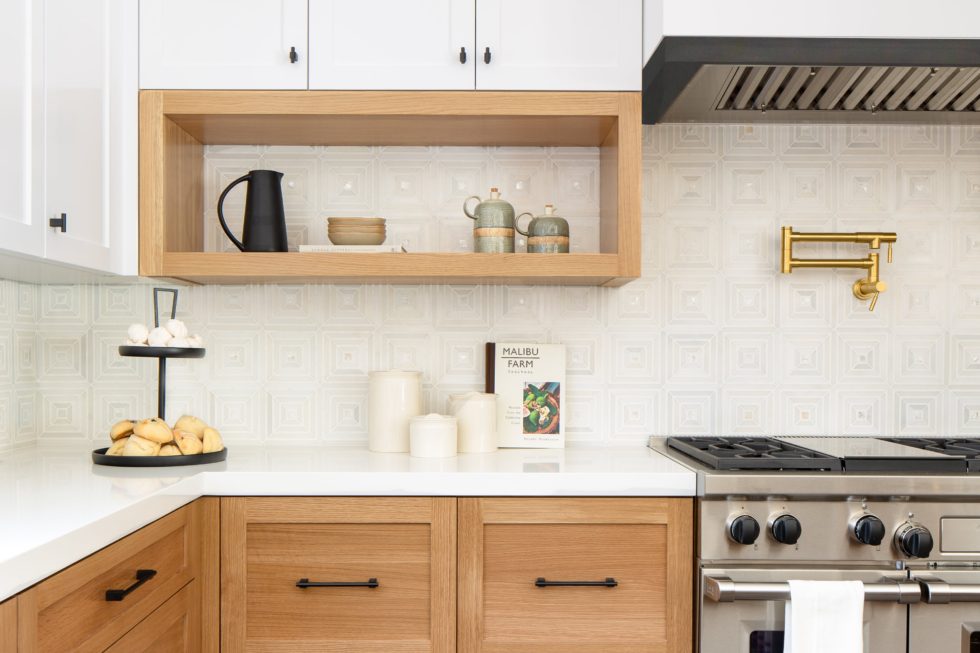
3. Mix warm and cool tones.
Here’s the part that may feel like a risk, but you’ve gotta go for it. Ready? It is OKAY to mix warm and cool metals. Yep, that’s right. It’s okay to mix a brushed brass with a silvery satin. In fact, mixing warm and cool tones can end up feeling even more complementary than mixing one metal tone with different finishes. When working on the kitchen of our Cameo project, above, we could have “played it safe” (aka played it boring!) and used all polished nickel or chrome hardware and fixtures since we knew the appliances would be silver tones of stainless steel. While stainless steel is a cooler-toned metal, can you see how well it is complemented by the brass pot filler faucet and matte back drawer pulls? In the end, the warm-cool mix creates a much more interesting, robust effect than if we were to stick with one tone throughout.

4. Consider hues from surrounding decor.
Once your tile, countertops, backsplashes, and textiles begin to come together in your space, it’s a good idea to consider how everything will mesh together when thinking about your metals. This bathroom from our Cameo project is one of my favorites of all time because the brass hardware really makes the surrounding grey + wood color scheme POP! The faucets are nickel and the countertop accessories are matte black, but can you imagine how different this space would look without the statement-making brass? I knew that brass and grey tones would go well together in this space, so I made sure to factor the surrounding materials into my metal decisions.
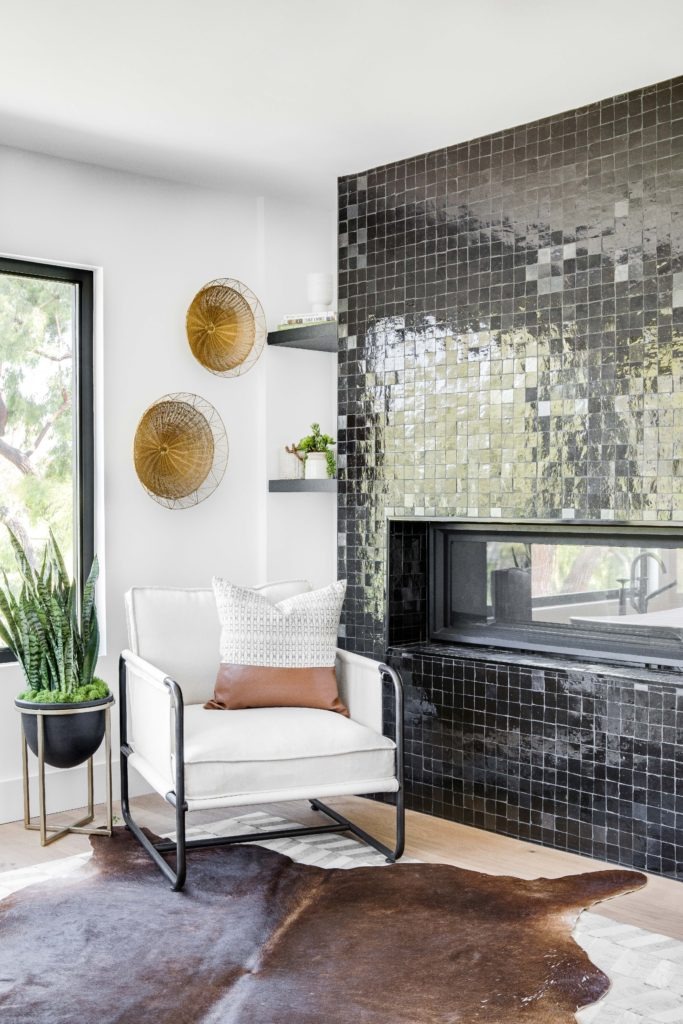
5. Use decor to strategically pull it all together.
Once your more permanent metal pieces are decided upon (i.e. faucets, hardware, light fixtures, mirrors), it’s time to pull it all together with your other furniture and décor elements… The fun part! I like to be cognizant of what kinds of vases, countertop décor, and shelf accessories I’m adding to a room so that I’m keeping that 3-metals-max rule in mind. In the photo above from our Seacliff project, the wire wall art, planter, and chair all have metal elements, but they complement the black fireplace and the metal trim on the windows because brass and black are the main tones.
Some final words of wisdom? Just remember that there’s no need to go overboard when creating a mix of metals in your home. Creating a look that is timeless, styled, forward and elegant means finding that delicate balance of metals that are mixed while still being complementary. As you can see in the photos above, we do it with almost every project we work on, so it absolutely can be done.
I hope you liked these product finds and tips on how to mix metals in your home! Speaking of products, stay tuned because we might just be cooking up some product-related new developments at the LG headquarters soon.
Now, I’d love to know…
Do you have any tips for mixing metals that you would add to my list?
Also, what blog post topics would you like to see me cover here this fall?
I’m so excited to be kicking my blog into gear again, and I would love to hear about topics you’re interested in reading about!
Xo, LG
P.S. If you liked this post, check out these!
A Studio Dreams Are Made Of
How to Get That Classic Kitchen Look You’ve Always Wanted
Nor Cal Modern Farmhouse Exterior Tour
Sea Cliff Spanish Modern Home: Install Week
Photos: @dustinrey, @marisavitalephoto, @chadmellon
Affiliate links may have been used in this post.
